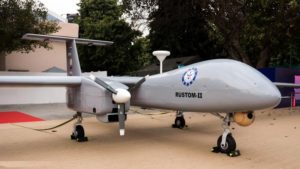
By: Ahyousha Khan 9/2/2018
Technology has made it possible for humans to inflict wrath, fire, and fury with bullets and firepower without even being physically present. Unmanned Armed Vehicles (UAV) is one such invention that gets the credit for relieving the human generation from facing the direct impact of their doings. However, simultaneously it is humans who should be credited for their invention that saved them the inconvenience of experiencing bullets and firepower.
In the 21st century, warfighting and intelligence gathering techniques have changed a lot. Now many countries are using UAV technology for intelligence, surveillance, reconnaissance, target acquisition and target destruction. Even in an underdeveloped region like South Asia, UAV or Drone is not some alien word. South Asia became accustomed to this technology due to its use by the US in War on Terrorism. Now both major arms race competitors (India-Pakistan) in South Asia possess this technology. Nonetheless, due to the strict international arms control mechanism, the acquisition of this technology is not an easy path.
However, Indian accession to Arms Control and Non-proliferation regimes in last two years will bring significant changes in the development of UAV technology in South Asia. One fact to reckon here is that UAV is dual-use technology and its export protocol is strictly followed under the guidelines of Missile Technology Control Regime (MTCR) and Wassenaar Arrangement.
If general arms race pattern of South Asia is to be analyzed, it is India that leads and Pakistan follows to avoid security dilemma. With Indian accession into the MTCR and Wassenaar Arrangement now all kind of dual-use technologies will be accessible to it. Both these regimes control technologies including space satellites, sophisticated cameras, and drone technologies. MTCR and Wassenaar Arrangement forbid its members from the spread of dual-use technologies, hence India to gain access to both regimes agreed to utilize these technologies only for its domestic military requirements.
Moreover, India’s official Joint Force Military Doctrine’s obsession with the Surgical Strikes indicates that India will opt for the means that will facilitate such strikes. As it will be impossible for India to send troops across the working boundary or LOC, so to put practicality into its plan Drones are quite a viable option. The reason behind acceleration in India’s UAV capability is the hawkish attitude of the Indian establishment. As Modi-Doval Doctrine wants India to have a hard power that could be used even against sub-conventional threats (cross-border terrorism) when times call for it.
India is not new to UAV technology as for quite some time India is operating Israeli Searcher and Heron Drones for not only command, control and communications but for intelligence, reconnaissance and target acquisition. Previously used drones by India’s armed forces didn’t have the capability to fire a missile. Thus, to change this predicament, India developed a Medium Altitude, Long Endurance (MALE) drone with the ability to fire a missile, known as Rustom 1. The missile Rustom 1 is integrated with locally developed anti-tank missile HELINA, which depicts the anti-armor capabilities. So far this drone is paired with Indian Navy, and Rustom II is also under development for Indian Naval forces.
In the century of communication network and satellites, every single technology relates to the other. Indian Satellite Based Augmentations (SABS) are not only satellite systems for local communications but they would strengthen UAVs capability to receive refined signals for precision vertical guidance to assist planes in a safe landing. Satellite capabilities are the key to better UAV technologies. Indian SAB systems would enable its UAVs to operate over a larger area and will navigate them to return. Also, Indian Army is launching designated military satellites that are enabling its UAV program.
As for now only Indian Navy possess locally build missile carrier drone, but the stage is all set for Indian land forces to acquire their UCAVs. With its increased power and access to more resources, Indian UCAV will become more stealthy and lethal.
Pakistan which is mostly a reluctant follower in South Asian arms race needs to focus on the technology that is necessary to run UAVs, which is the satellite system of its own. Pakistan’s Buraq and its missile BARQ are extraordinary achievements considering Pakistan’s technological and economic restrains. But, in the long run without its military and communication satellite, C4ISR and ISTAR programs cannot enter into the next phase.
